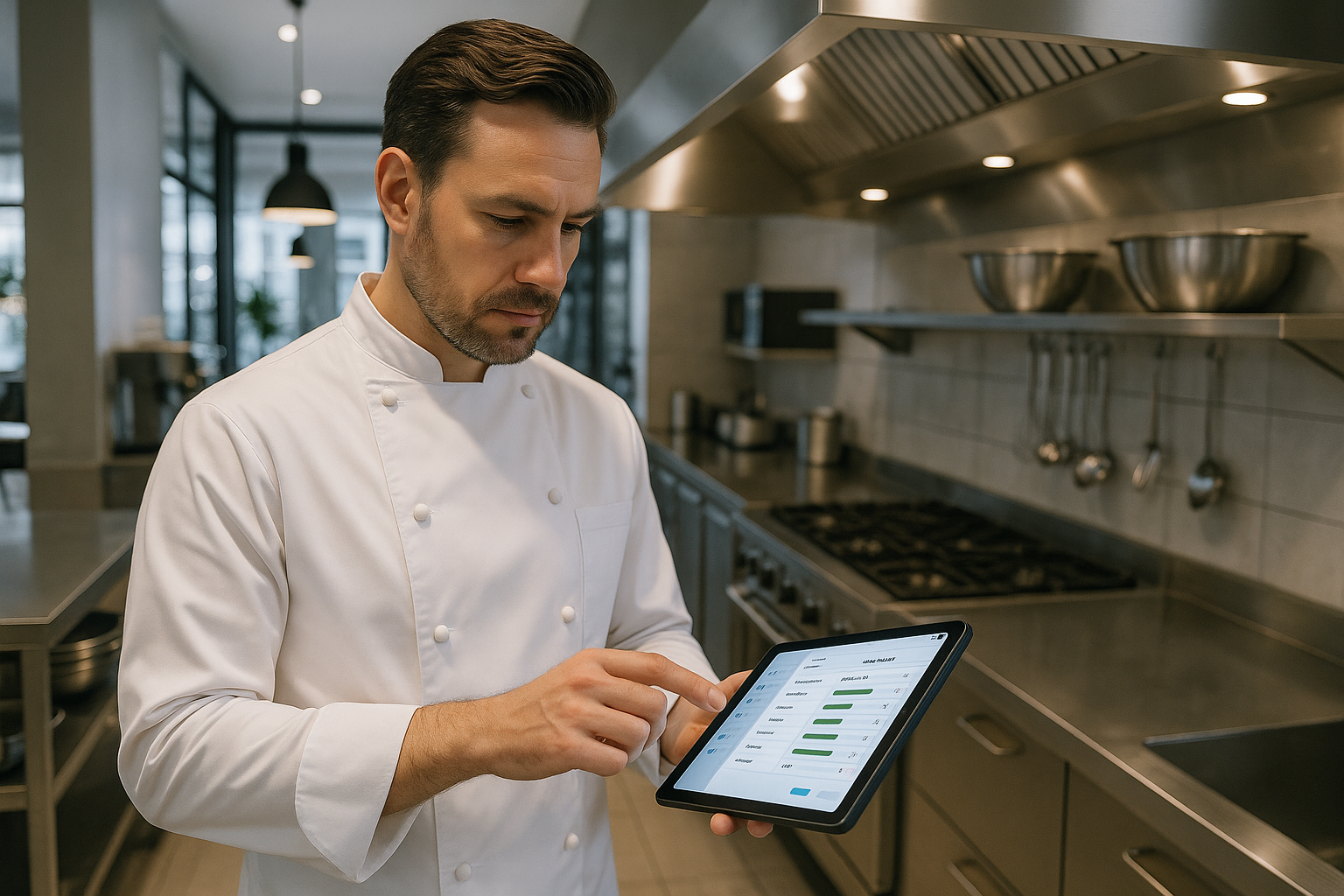The global restaurant management software market has reached a staggering $5.79 billion in 2024 and is projected to surge to $14.70 billion by 2030, expanding at an impressive compound annual growth rate of 17.4%. This explosive growth reflects a fundamental transformation in how restaurants approach inventory management, with restaurant inventory app solutions evolving from simple stock tracking tools into sophisticated restaurant software platforms that integrate predictive analytics, real-time monitoring, and comprehensive cost control capabilities.
The financial imperative for effective inventory management has never been more critical. Restaurants collectively spend over $162 billion annually on waste-related costs, while the global economy loses approximately $1 trillion to food waste each year. These staggering figures underscore why 42% of restaurants have already invested in inventory management software, recognizing that each dollar saved through better inventory control can generate up to $14 in additional revenue.
Modern restaurant inventory app solutions address the complex challenges facing today's food service operations. From reducing the 40% of food that goes uneaten in the United States to optimizing the $382 billion in food surpluses generated annually, these management tools have become essential for maintaining competitive advantage in an increasingly demanding market. The technology enables restaurants to transform inventory management from a reactive, manual process into a proactive, data-driven operation that directly impacts profitability and sustainability.
The adoption of restaurant technology for inventory management represents more than just operational efficiency—it's a strategic response to evolving consumer expectations and regulatory pressures. With 91% of consumers preferring to purchase from businesses that actively reduce food waste, restaurants implementing comprehensive inventory solutions position themselves advantageously in both cost management and brand perception. This comprehensive guide examines the leading restaurant inventory app options, analyzes their features and pricing structures, and provides data-driven insights to help restaurant owners make informed technology investment decisions.
The Restaurant Inventory Challenge: Understanding the Critical Need for Digital Solutions
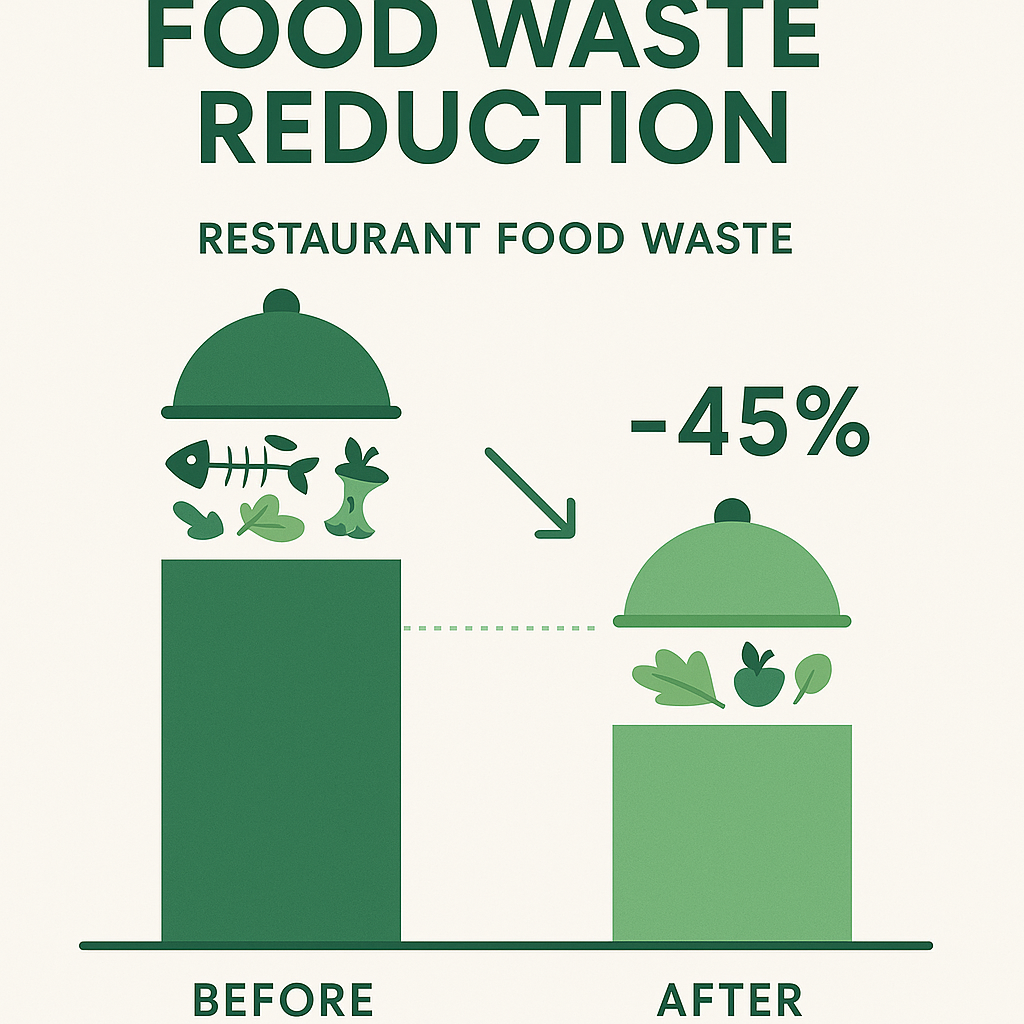
The restaurant industry faces unprecedented challenges in inventory management that extend far beyond simple stock tracking. Traditional manual inventory processes, once adequate for smaller operations, have become inadequate for modern restaurant operations dealing with complex supply chains, fluctuating demand patterns, and increasingly sophisticated customer expectations. The financial and operational consequences of ineffective inventory management create cascading effects that impact every aspect of restaurant performance.
Food waste represents the most visible and costly consequence of poor inventory management. Full-service restaurants alone waste 5.76 million tons of food annually, while limited-service establishments contribute an additional 2.45 million tons to this staggering total [6]. This waste occurs across multiple operational areas, with kitchen food preparation, food service delivery, and customer consumption each contributing to the overall loss. The financial impact extends beyond the immediate cost of wasted ingredients to include labor costs associated with preparation, storage expenses, and disposal fees.
The complexity of modern restaurant operations exacerbates inventory management challenges. Multi-location restaurants must coordinate inventory across different sites while maintaining consistency in food quality and availability. Seasonal menu variations require sophisticated forecasting capabilities to prevent both stockouts and overordering. Integration with pos systems, online ordering platforms, and delivery services creates additional complexity as inventory levels must be updated in real-time across multiple channels to prevent overselling or disappointing customers.
Manual inventory processes create numerous opportunities for error and inefficiency. Staff members conducting physical counts may miss items, miscount quantities, or fail to account for items in various stages of preparation. Paper-based tracking systems provide no real-time visibility into inventory levels, making it impossible to respond quickly to unexpected demand spikes or supply chain disruptions. The time required for manual inventory counts diverts valuable staff resources from customer service and food preparation activities.
Supplier relationship management adds another layer of complexity to restaurant inventory challenges. Restaurants typically work with multiple suppliers for different product categories, each with unique ordering systems, delivery schedules, and pricing structures. Coordinating orders across multiple suppliers while maintaining optimal inventory levels requires sophisticated planning capabilities that exceed the capacity of manual systems. Price fluctuations and seasonal availability changes further complicate purchasing decisions.
The emergence of ghost kitchens, delivery-only concepts, and hybrid restaurant models has created new inventory management requirements. These operations often serve multiple brands from a single kitchen, requiring precise tracking of ingredients across different menu offerings. The lack of traditional dining room operations means that inventory turnover patterns differ significantly from conventional restaurants, demanding specialized forecasting and ordering algorithms.
Regulatory compliance and food safety requirements add additional complexity to inventory management processes. Restaurants must maintain detailed records of ingredient sources, expiration dates, and storage conditions to comply with health department regulations and food safety protocols. Manual tracking systems struggle to provide the comprehensive documentation required for regulatory compliance, particularly during health inspections or food safety incidents.
The labor shortage affecting the restaurant industry has made efficient inventory management even more critical. With fewer staff members available to conduct manual inventory counts and manage ordering processes, restaurants need automated solutions that reduce labor requirements while improving accuracy. Restaurant systems that integrate inventory management with other operational functions enable remaining staff to focus on revenue-generating activities rather than administrative tasks.
Top Restaurant Inventory App Features: Essential Capabilities for Modern Operations

Modern restaurant inventory app solutions have evolved far beyond simple stock counting tools to become comprehensive restaurant technology platforms that integrate seamlessly with existing restaurant operations. Understanding the essential features that distinguish effective inventory management solutions from basic tracking applications is crucial for restaurant owners seeking to maximize their technology investment and operational efficiency.
Real-Time Inventory Tracking and Automated Updates
The foundation of any effective restaurant inventory app lies in its ability to provide real-time visibility into stock levels across all locations and storage areas. Advanced systems automatically update inventory quantities as items are used in food preparation, sold through pos systems, or received from suppliers. This real-time synchronization eliminates the discrepancies that plague manual inventory systems and enables restaurant managers to make informed decisions based on current, accurate data.
Integration with restaurant pos systems ensures that inventory levels automatically adjust as orders are processed, providing immediate visibility into stock depletion rates and potential shortages. This integration extends to online ordering platforms and delivery services, ensuring that inventory availability is accurately reflected across all sales channels. The most sophisticated systems can even account for ingredients used in complex recipes, automatically deducting component items when finished dishes are sold.
Predictive Analytics and Demand Forecasting
Leading restaurant inventory app solutions incorporate artificial intelligence and machine learning algorithms to analyze historical sales data, seasonal trends, and external factors to predict future demand patterns. These predictive capabilities enable restaurants to optimize ordering schedules, reduce waste from overordering, and prevent stockouts that could impact customer satisfaction and revenue generation.
Advanced forecasting algorithms consider multiple variables including day of the week, seasonal variations, weather patterns, local events, and promotional activities to generate accurate demand predictions. Some systems can even analyze social media trends and local event calendars to anticipate demand spikes for specific menu items. This sophisticated analysis enables restaurants to maintain optimal inventory levels while minimizing carrying costs and waste.
Mobile Accessibility and User-Friendly Interfaces
The most effective restaurant inventory app solutions prioritize mobile accessibility, recognizing that restaurant staff need to access inventory information and update stock levels from various locations throughout the facility. Mobile applications enable staff to conduct inventory counts using smartphones or tablets, scan barcodes for quick item identification, and update stock levels in real-time without returning to a central computer terminal.
User interface design plays a critical role in adoption and effectiveness. The best inventory management solutions feature intuitive interfaces that require minimal training and enable staff to complete inventory tasks quickly and accurately. Visual indicators for low stock levels, expiration date warnings, and reorder points help staff prioritize their activities and respond proactively to potential issues.
Comprehensive Reporting and Analytics Capabilities
Sophisticated reporting capabilities distinguish professional-grade restaurant inventory app solutions from basic tracking tools. Comprehensive analytics provide insights into food cost percentages, waste patterns, supplier performance, and inventory turnover rates. These reports enable restaurant managers to identify opportunities for cost reduction, optimize menu pricing, and improve overall operational efficiency.
Advanced reporting features include variance analysis that compares actual usage against theoretical consumption based on sales data, helping identify potential theft, waste, or portion control issues. Trend analysis capabilities enable managers to track performance over time and measure the impact of operational changes on inventory efficiency and cost control.
Supplier Integration and Automated Ordering
Modern restaurant inventory app solutions increasingly offer direct integration with supplier systems, enabling automated ordering based on predetermined reorder points and demand forecasts. This integration streamlines the procurement process, reduces the administrative burden on restaurant staff, and helps ensure optimal inventory levels are maintained consistently.
Automated ordering capabilities can be configured with approval workflows for high-value purchases while allowing routine orders to process automatically. Integration with multiple suppliers enables restaurants to optimize purchasing decisions based on price, quality, and delivery schedules while maintaining comprehensive records for accounting and compliance purposes.
Best Restaurant Inventory Apps Comparison: Leading Solutions for 2025

The restaurant inventory app market features numerous solutions ranging from basic tracking tools to comprehensive restaurant business tools that integrate inventory management with broader operational functions. Understanding the strengths, limitations, and pricing structures of leading platforms enables restaurant owners to select solutions that align with their specific operational needs and budget constraints.
MarketMan: Predictive Analytics and Comprehensive Integration
MarketMan has established itself as a leading restaurant inventory app through its focus on predictive analytics and comprehensive integration capabilities. The platform combines real-time inventory tracking with sophisticated demand forecasting algorithms that analyze historical sales data, seasonal trends, and external factors to optimize ordering decisions and reduce waste.
The system's strength lies in its ability to integrate seamlessly with popular pos systems, accounting software, and supplier platforms, creating a unified ecosystem for restaurant management. MarketMan's mobile application enables staff to conduct inventory counts, update stock levels, and place orders from anywhere in the restaurant, while automated reorder points ensure optimal stock levels are maintained consistently.
MarketMan's reporting capabilities provide detailed insights into food cost percentages, waste patterns, and supplier performance, enabling restaurant managers to identify cost reduction opportunities and optimize operational efficiency. The platform's recipe costing features automatically calculate dish costs based on current ingredient prices, supporting dynamic menu pricing strategies that maintain profit margins despite fluctuating supplier costs.
Restaurant365: Comprehensive Restaurant Management Platform
Restaurant365 positions itself as a comprehensive restaurant software solution that integrates inventory management with accounting, scheduling, and operational reporting functions. This integrated approach appeals to restaurant owners seeking to consolidate multiple operational functions within a single platform, reducing complexity and improving data consistency across different business functions.
The platform's inventory management capabilities include real-time tracking, automated ordering, and comprehensive waste tracking that helps restaurants identify and address sources of food loss. Integration with the platform's accounting functions provides detailed cost analysis and profit margin calculations that support strategic decision-making and financial planning.
Restaurant365's strength lies in its comprehensive approach to restaurant management, offering features that extend beyond inventory control to include labor management, financial reporting, and compliance tracking. This breadth of functionality makes it particularly attractive to multi-location operators and larger restaurant groups that require sophisticated management tools and centralized reporting capabilities.
Square for Restaurants: Integrated POS and Inventory Solution
Square for Restaurants offers inventory management capabilities as part of its comprehensive pos systems platform, providing seamless integration between sales processing and stock tracking. This integration ensures that inventory levels are automatically updated as orders are processed, providing real-time visibility into stock depletion and potential shortages.
The platform's inventory features include low stock alerts, ingredient tracking for complex recipes, and basic reporting capabilities that provide insights into food costs and waste patterns. Square's mobile application enables staff to update inventory levels and conduct stock counts using smartphones or tablets, while integration with the company's payment processing services provides comprehensive transaction and inventory data.
Square for Restaurants appeals particularly to smaller operations and single-location restaurants that prioritize simplicity and integration over advanced analytics capabilities. The platform's pricing structure, which includes inventory management as part of its overall pos systems offering, provides cost-effective access to essential inventory tracking functionality.
Emerging Solutions and Specialized Platforms
The restaurant inventory app market continues to evolve with new entrants offering specialized capabilities and innovative approaches to inventory management. Platforms like Craftable focus specifically on recipe management and ingredient costing, while solutions like Yellow Dog emphasize supplier integration and automated ordering capabilities.
These specialized platforms often provide deeper functionality in specific areas while maintaining competitive pricing structures that appeal to restaurants with particular operational requirements. The emergence of artificial intelligence and machine learning capabilities in inventory management continues to drive innovation, with new solutions offering increasingly sophisticated forecasting and optimization capabilities.
The competitive landscape encourages continuous innovation and feature development, benefiting restaurant owners through improved functionality, competitive pricing, and expanded integration options. As the market matures, consolidation among smaller providers and feature expansion by established platforms will likely continue to shape the available options for restaurant inventory management.
Pricing Analysis & Cost Considerations: Understanding Investment Requirements and ROI Potential
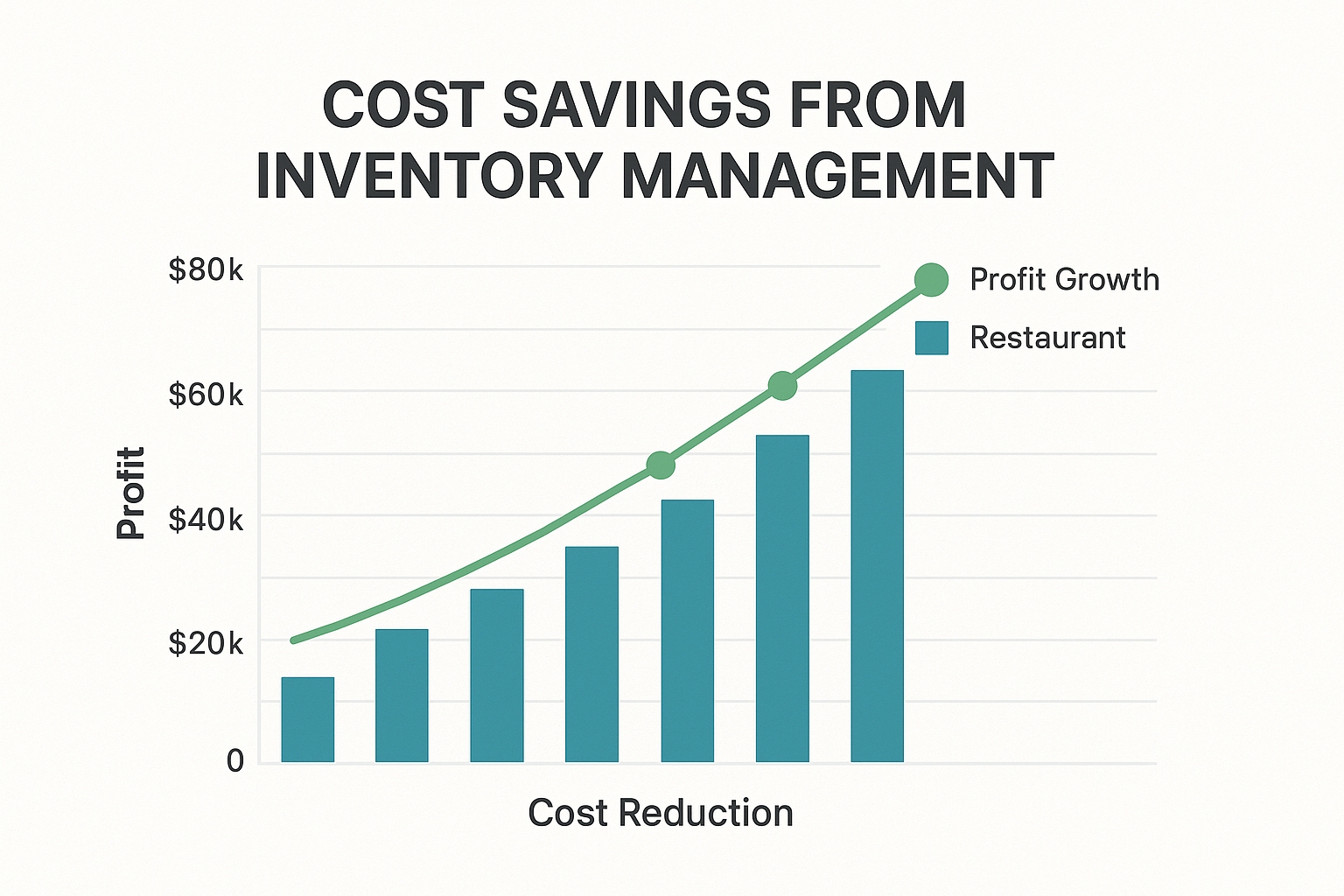
The investment required for restaurant inventory app implementation varies significantly based on feature requirements, restaurant size, and integration complexity. Understanding the complete cost structure, including subscription fees, implementation expenses, and ongoing operational costs, enables restaurant owners to make informed decisions and accurately calculate return on investment potential.
Subscription Models and Pricing Tiers
Most restaurant inventory app providers utilize subscription-based pricing models that scale with restaurant size and feature requirements. Entry-level solutions typically start around $59 per month for basic inventory tracking capabilities, while comprehensive restaurant management tools can exceed $400 monthly for enterprise-level functionality [7]. Mid-tier solutions, which include advanced analytics and integration capabilities, generally range from $100 to $250 monthly per location.
The pricing structure often depends on the number of locations, users, and integrated features required. Single-location restaurants may qualify for simplified pricing models, while multi-location operations typically require enterprise pricing that includes centralized reporting, user management, and advanced analytics capabilities. Some providers offer per-user pricing models that can be more cost-effective for smaller operations with limited staff requirements.
Volume discounts and annual contract commitments can significantly reduce subscription costs. Many providers offer 10% to 20% discounts for annual payments, while multi-year commitments may provide even greater savings. Restaurant groups operating multiple locations often qualify for volume pricing that reduces per-location costs as the number of sites increases.
Implementation and Setup Costs
Professional implementation services represent a significant but often necessary investment for restaurant inventory app deployment. Setup costs typically range from $500 to $5,000 depending on system complexity, data migration requirements, and customization needs. Comprehensive implementations that include menu setup, recipe configuration, and supplier integration generally require higher initial investments but provide faster time-to-value and reduced ongoing support requirements.
Data migration from existing systems adds complexity and cost to implementation projects. Restaurants transitioning from manual processes or legacy systems may require professional services to establish initial inventory levels, configure product catalogs, and set up supplier relationships. These migration services typically cost $1,000 to $3,000 but are essential for ensuring accurate system operation from day one.
Staff training represents another implementation cost that varies based on system complexity and staff size. Basic training programs may be included in implementation packages, while comprehensive training for managers and staff on advanced features typically requires additional investment. Professional training programs can cost $200 to $500 per session but significantly improve adoption rates and system effectiveness.
Integration and Ongoing Operational Costs
Integration with existing restaurant systems, including pos systems, accounting software, and supplier platforms, may require additional fees beyond basic subscription costs. API integration fees typically range from $50 to $200 monthly per integration, while custom integrations for specialized systems can cost significantly more.
Ongoing support and maintenance costs should be factored into total cost of ownership calculations. While basic support is typically included in subscription fees, premium support services with guaranteed response times and dedicated account management may require additional monthly fees ranging from $100 to $500 per location.
Hardware requirements for mobile inventory management may necessitate additional investments in tablets, barcode scanners, and mobile devices. While many solutions work with existing smartphones and tablets, dedicated hardware can improve efficiency and durability in restaurant environments. Hardware costs typically range from $200 to $800 per device depending on specifications and durability requirements.
ROI Calculation and Payback Periods
The return on investment for restaurant inventory app implementation typically occurs within 6 to 18 months when systems are properly implemented and utilized. The primary sources of ROI include food waste reduction, labor savings, and improved purchasing efficiency. Restaurants implementing comprehensive inventory management solutions report average food cost reductions of 3% to 8%, which often exceeds the annual cost of the software investment [8].
Labor savings represent another significant source of ROI, as automated inventory tracking and ordering processes reduce the time required for manual inventory management. Restaurants typically save 5 to 15 hours weekly on inventory-related tasks, translating to annual labor cost savings of $5,000 to $15,000 depending on wage rates and operational complexity.
Improved purchasing efficiency through better demand forecasting and supplier integration can reduce food costs while improving cash flow management. Restaurants report 10% to 25% improvements in inventory turnover rates, reducing carrying costs and minimizing waste from expired products.
ROI & Benefits Analysis: Quantifying the Impact of Restaurant Inventory App Implementation
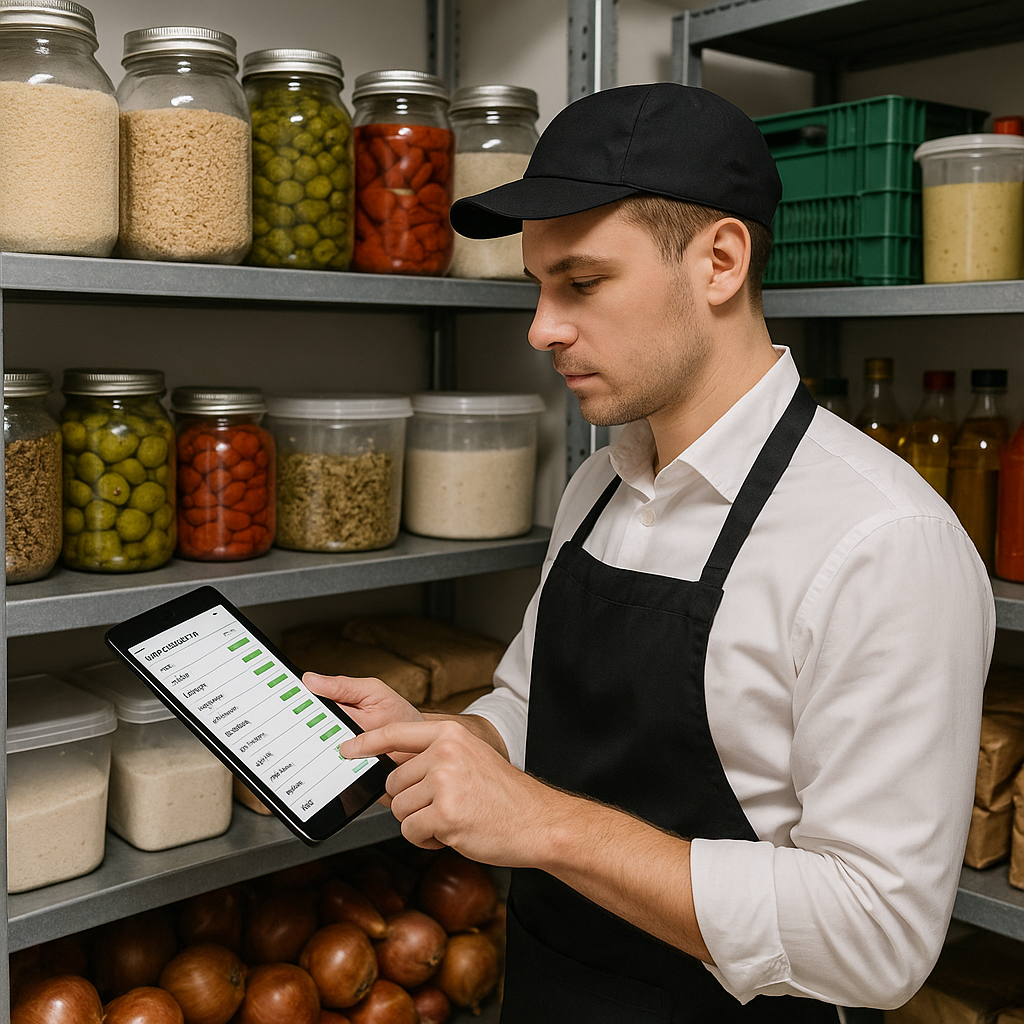
The financial and operational benefits of restaurant inventory app implementation extend far beyond simple cost savings to encompass comprehensive improvements in efficiency, profitability, and competitive positioning. Understanding these benefits and their quantifiable impact enables restaurant owners to justify technology investments and measure success against established benchmarks.
Food Waste Reduction and Cost Savings
The most immediate and measurable benefit of effective inventory management comes through dramatic reductions in food waste. Restaurants implementing comprehensive inventory tracking systems report average waste reductions of 18%, with some operations achieving even greater improvements through optimized ordering and preparation processes [9]. Given that restaurants collectively spend $162 billion annually on waste-related costs, even modest improvements in waste reduction translate to significant financial benefits.
The financial impact of waste reduction extends beyond the immediate cost of discarded food to include labor costs associated with preparation, storage expenses, and disposal fees. Each dollar saved through improved inventory management generates approximately $14 in additional revenue through improved profit margins and operational efficiency [10]. This multiplier effect occurs because waste reduction improves gross margins while fixed costs remain constant, amplifying the impact of inventory improvements on overall profitability.
Advanced inventory management systems enable restaurants to optimize portion sizes, reduce overproduction, and improve rotation of perishable items. Predictive analytics capabilities help restaurants align production with actual demand patterns, reducing the likelihood of preparing excess food that ultimately becomes waste. Real-time tracking of expiration dates ensures that items are used before spoilage occurs, maximizing the value extracted from each ingredient purchase.
Operational Efficiency and Labor Optimization
Restaurant inventory app implementation typically results in significant improvements in operational efficiency through automation of manual processes and optimization of staff workflows. Restaurants report 5% to 10% revenue increases through improved operational efficiency, while operating costs decrease by an average of 15% due to reduced labor requirements and improved resource utilization [11].
Automated inventory tracking eliminates the need for time-consuming manual counts while providing more accurate and timely information for decision-making. Staff members can focus on revenue-generating activities rather than administrative tasks, improving overall productivity and customer service quality. Mobile inventory management capabilities enable staff to update stock levels and place orders from anywhere in the restaurant, reducing the time required for inventory-related activities.
Integration with pos systems and supplier platforms streamlines ordering processes and reduces the administrative burden associated with procurement activities. Automated reorder points ensure that stock levels are maintained consistently without requiring constant management attention, while integration with accounting systems provides real-time visibility into food costs and profit margins.
Profit Margin Enhancement and Financial Performance
Comprehensive inventory management directly impacts restaurant profitability through improved cost control, optimized pricing strategies, and enhanced cash flow management. Restaurants implementing advanced inventory solutions report EBITDA improvements of up to 20% through better cost management and operational efficiency [12].
Recipe costing capabilities enable restaurants to maintain optimal profit margins despite fluctuating ingredient costs by providing real-time visibility into dish profitability. Dynamic pricing strategies based on current ingredient costs help restaurants maintain consistent margins while remaining competitive in their markets. Menu engineering insights identify high-margin items that should be promoted while highlighting low-margin dishes that may require repricing or reformulation.
Improved inventory turnover rates reduce carrying costs and minimize the risk of losses from expired or damaged products. Better demand forecasting enables restaurants to optimize purchasing decisions, taking advantage of volume discounts and seasonal pricing while avoiding overordering that ties up working capital in excess inventory.
Compliance and Risk Management Benefits
Restaurant inventory app solutions provide comprehensive documentation and traceability capabilities that support regulatory compliance and risk management objectives. Detailed records of ingredient sources, expiration dates, and storage conditions help restaurants demonstrate compliance with health department regulations and food safety protocols.
Automated alerts for expiring products and temperature monitoring integration help prevent food safety incidents that could result in regulatory penalties, customer illness, or reputation damage. Comprehensive audit trails provide the documentation necessary for health inspections and food safety investigations, reducing the risk of regulatory violations and associated penalties.
Supplier performance tracking and quality management capabilities help restaurants identify and address potential issues before they impact operations or customer satisfaction. Integration with supplier systems provides visibility into delivery schedules, product quality, and pricing changes that could affect restaurant operations.
Implementation Best Practices: Maximizing Success and ROI from Restaurant Inventory App Deployment
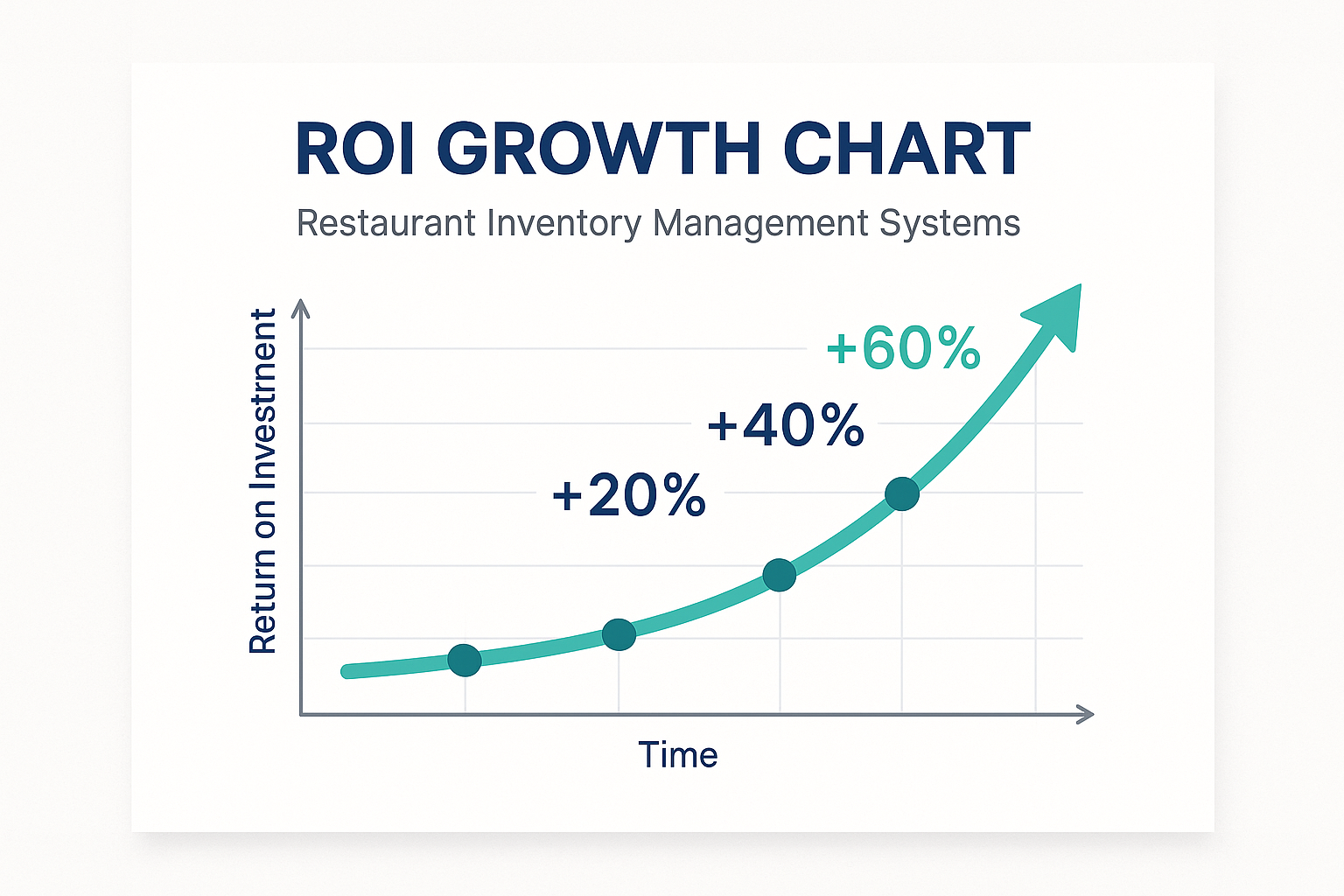
Successful restaurant inventory app implementation requires careful planning, comprehensive staff training, and ongoing optimization to achieve maximum return on investment. Understanding best practices for system selection, deployment, and ongoing management enables restaurant owners to avoid common pitfalls and accelerate time-to-value from their technology investments.
System Selection and Vendor Evaluation
The foundation of successful inventory management implementation lies in selecting the appropriate solution for specific operational requirements and growth objectives. Restaurant owners should conduct comprehensive needs assessments that consider current operational challenges, integration requirements, and future expansion plans. This assessment should include evaluation of existing restaurant systems, staff capabilities, and budget constraints to ensure selected solutions align with operational realities.
Vendor evaluation should extend beyond feature comparisons to include assessment of implementation support, ongoing customer service, and long-term viability. Restaurant owners should request references from similar operations and conduct pilot implementations when possible to validate system capabilities and user experience. Integration capabilities with existing pos systems, accounting software, and supplier platforms should be thoroughly tested to ensure seamless operation.
Staff Training and Change Management
Comprehensive staff training represents a critical success factor for restaurant inventory app implementation. Training programs should address not only system operation but also the underlying principles of effective inventory management and the benefits that proper system utilization provides to both the restaurant and individual staff members. Hands-on training with actual restaurant data and scenarios helps staff understand how the system applies to their daily responsibilities.
Change management strategies should address potential resistance to new processes and emphasize the benefits that improved inventory management provides to staff productivity and job satisfaction. Involving key staff members in system selection and implementation planning helps build buy-in and identifies potential champions who can support ongoing adoption efforts.
Performance Measurement and Continuous Improvement
Establishing clear performance metrics and monitoring systems enables restaurants to measure the impact of inventory management improvements and identify opportunities for further optimization. Key performance indicators should include food cost percentages, waste reduction metrics, inventory turnover rates, and labor efficiency measures that directly relate to inventory management activities.
Regular review of system performance and user feedback helps identify areas for improvement and ensures that the system continues to meet evolving operational requirements. Many restaurant inventory app providers offer ongoing optimization services and best practice sharing that can help restaurants maximize their return on investment over time.
Conclusion: Transforming Restaurant Operations Through Strategic Inventory Management
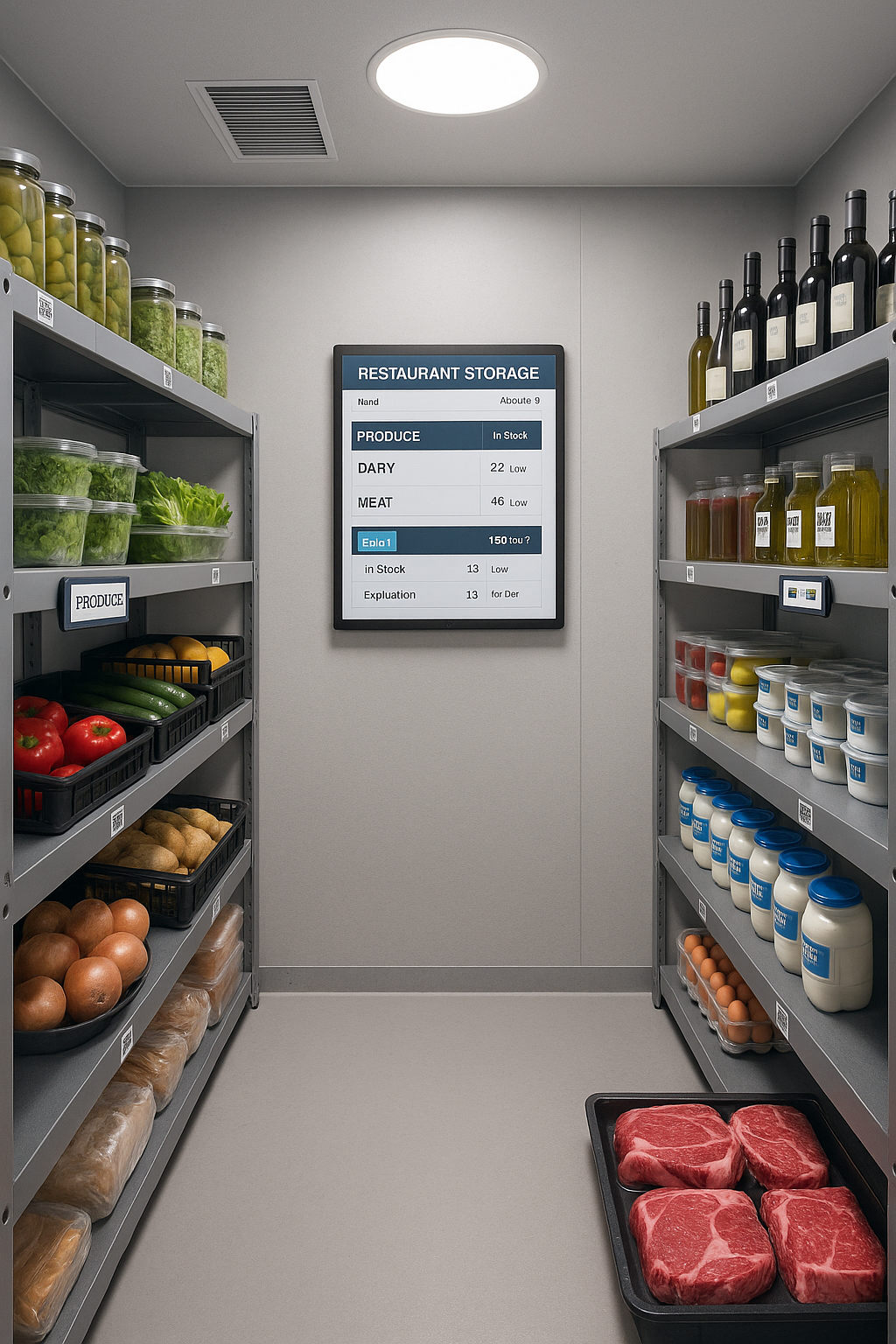
The evolution of restaurant inventory app solutions from basic tracking tools to comprehensive restaurant technology platforms represents a fundamental shift in how successful restaurants approach operational management. With the global restaurant management software market projected to reach $14.70 billion by 2030 and 42% of restaurants already implementing inventory management solutions, the question for restaurant owners is not whether to invest in inventory technology, but rather which solution best aligns with their operational needs and growth objectives.
The financial imperative for effective inventory management has never been clearer. With restaurants spending $162 billion annually on waste-related costs and each dollar saved through better inventory control generating $14 in additional revenue, the ROI potential for properly implemented inventory management solutions is substantial. The most successful restaurants are those that view inventory management not as a cost center but as a strategic capability that drives profitability, sustainability, and competitive advantage.
The key to successful restaurant inventory app implementation lies in selecting solutions that integrate seamlessly with existing restaurant operations while providing the analytics and automation capabilities necessary to optimize performance. Whether choosing comprehensive platforms like MarketMan and Restaurant365 or integrated solutions like Square for Restaurants, restaurant owners should prioritize systems that offer real-time tracking, predictive analytics, mobile accessibility, and comprehensive reporting capabilities.
As the restaurant industry continues evolving toward greater technology integration and data-driven decision making, inventory management will become increasingly central to operational success. Restaurant owners who invest strategically in appropriate inventory management solutions, implement them comprehensively, and optimize their utilization continuously will be best positioned to capitalize on the efficiency gains, cost savings, and competitive advantages that modern restaurant inventory app solutions provide.

